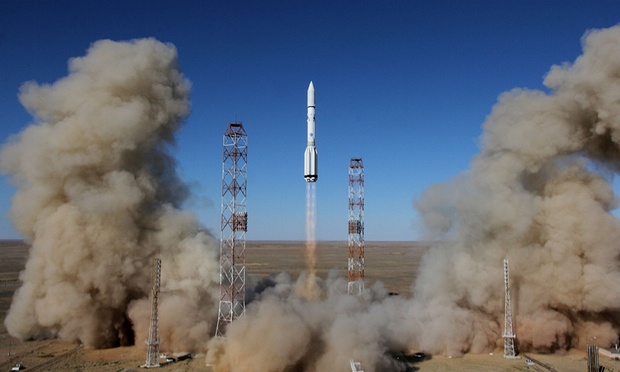Inmarsat Confirms Successful Launch of the Third Global Xpress Satellite
 Baikonur Cosmodrome, Kazakhstan, September 1, 2015–Inmarsat (LSE:ISAT.L), has confirmed the successful launch of its third satellite in the transformational Global Xpress (GX) constellation. Inmarsat-5 F3 (I-5 F3), which was launched from the Baikonur Cosmodrome in Kazakhstan at 12.44pm (BST), entered orbit on August 29 at 04.15 am (BST) following a 15 hour and 31 minute mission.
Baikonur Cosmodrome, Kazakhstan, September 1, 2015–Inmarsat (LSE:ISAT.L), has confirmed the successful launch of its third satellite in the transformational Global Xpress (GX) constellation. Inmarsat-5 F3 (I-5 F3), which was launched from the Baikonur Cosmodrome in Kazakhstan at 12.44pm (BST), entered orbit on August 29 at 04.15 am (BST) following a 15 hour and 31 minute mission.
Over the coming weeks, the Inmarsat Operations Team will raise I-5 F3 to its final orbit, deploy its solar arrays and reflectors, and undertake payload testing. At the end of these procedures, I-5 F3 will be ready to join the first two GX satellites, which are already in orbit and operating successfully, to create the first, globally available, high-speed mobile broadband network delivered by a single operator.
Rupert Pearce, CEO of Inmarsat, said: “We have been working towards this day ever since we announced plans to create the Global Xpress constellation in 2010. I am delighted that we now have three Global Xpress satellites in orbit, enabling us to provide global GX services by the end of the year. This is a significan milestone for Inmarsat; one that will offer major growth opportunities and promises to change the face of our industry:"
“Global Xpress will deliver broadband speeds that are an order of magnitude faster than our fourth generation (I-4) constellation, to customers on the move on land, at sea and in the air, globally. As such, the GX fleet will offer a host of new opportunities for both our existing and new customers to significantly enhance their connectivity capabilities and to deploy bandwidth-hungry applications and solutions efficiently and effectively, even in the remotest and most inaccessible parts of the world. Global Xpress is, therefore, an important enabler for continued growth in global mobile broadband - it is the ‘Internet of Everywhere,’ Pearce added.
The first Global Xpress satellite – Inmarsat-5 F1, built by Boeing – was launched in December 2013 and entered commercial service in July 2014, covering Europe, the Middle East, Africa and Asia. This was followed by the launch of Inmarsat-5 F2 on 1st February 2015, which covers the Americas and the Atlantic Ocean and entered commercial service this month (August).
Each of the three Inmarsat-5 satellites use fixed narrow spot beams to deliver higher speeds through more compact terminals. Steerable beams direct additional capacity in real-time to where it’s needed to provide seamless, global broadband communications coverage to Inmarsat users worldwide on land, at sea, and in the air. A fourth Boeing-built Inmarsat-5 (F4) is scheduled for delivery in mid-2016.
The I-5 F3 launch marked the 405th launch for Proton since its maiden flight in 1965 and the 90th ILS Proton Launch overall. This was also the 19th Boeing-built satellite launched on an ILS Proton and the 5th Inmarsat satellite launched on Proton overall. The Proton M Breeze M vehicle is developed and built by Khrunichev Research and Production Space Center of Moscow, Russia’s premier space industry manufacturer and majority shareholder in ILS.
Related Articles:
Inmarsat Report Continued MSS Growth in First Half 2015
Interview with Rash Jhanjee, Head-Global Xpress Strategy and Business Development, Inmarsat
Global Mobile Satellite Services Market to Reach US$ 3.2 Billion by 2020





